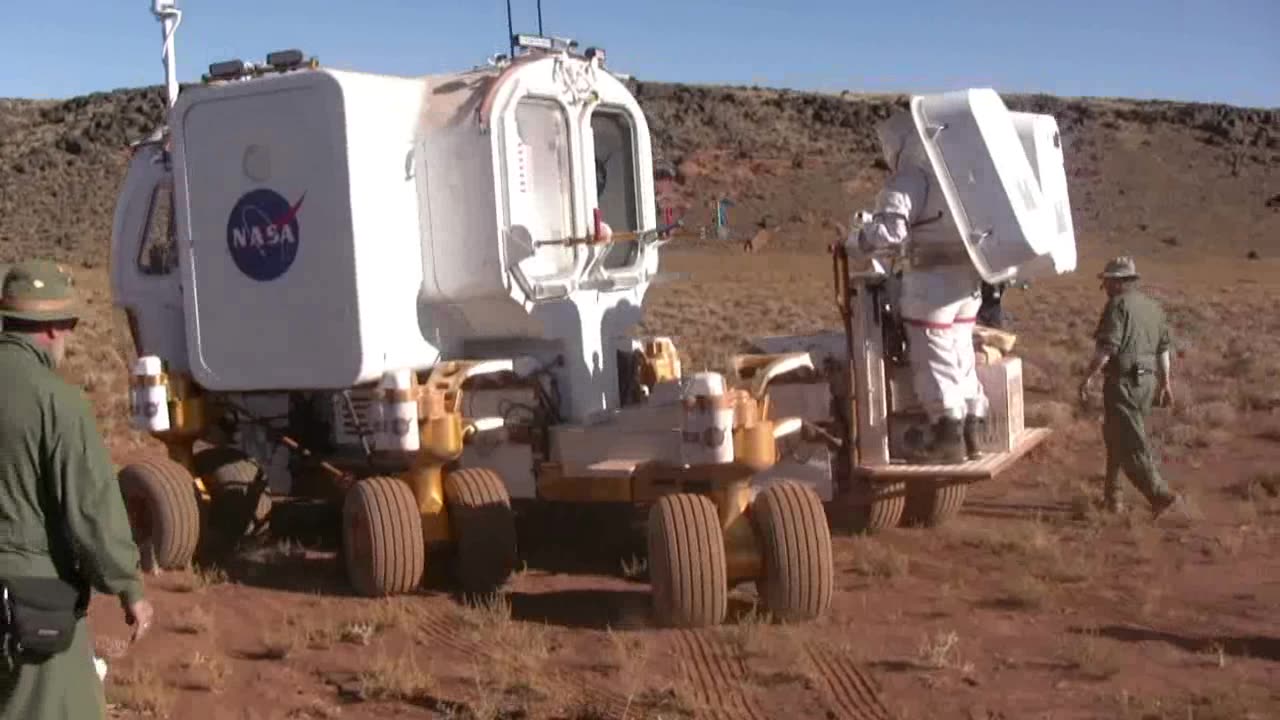Premium Only Content

Analog Technology for Future Settlement Missions on Moon and Mars Furthermore.....
Human exploration beyond low-Earth orbit (LEO) will require a unique collection of
advanced, innovative technologies and the precise execution of complex and challenging
operational concepts. One tool we in the Analog Missions Project at the National
Aeronautics and Space Administration (NASA) utilize to validate exploration system
architecture concepts and conduct technology demonstrations, while gaining a deeper
understanding of system-wide technical and operational challenges, is our analog missions.
Analog missions are multi-disciplinary activities that test multiple features of future
spaceflight missions in an integrated fashion to gain a deeper understanding of system-level
interactions and integrated operations. These missions frequently occur in remote and
extreme environments that are representative in one or more ways to that of future
spaceflight destinations. They allow us to test robotics, vehicle prototypes, habitats,
communications systems, in-situ resource utilization, and human performance as it relates to
these technologies. And they allow us to validate architectural concepts, conduct technology
demonstrations, and gain a deeper understanding of system-wide technical and operational
challenges needed to support crewed missions beyond LEO. As NASA develops a capability
driven architecture for transporting crew to a variety of space environments, including the
moon, near-Earth asteroids (NEA), Mars, and other destinations, it will use its analog
missions to gather requirements and develop the technologies that are necessary to ensure
successful human exploration beyond LEO. Currently, there are four analog mission
platforms: Research and Technology Studies (RATS), NASA’s Extreme Environment
Mission Operations (NEEMO), In-Situ Resource Utilization (ISRU), and International Space
Station (ISS) Test bed for Analog Research (ISTAR).
-
 1:11:22
1:11:22
Vigilant News Network
7 hours agoElon Musk Shuts Down RFK Jr. Critics With One Powerful Statement | The Daily Dose
37.6K12 -
 1:12:23
1:12:23
Dad Dojo Podcast
19 hours agoEP20: The Super Bowl and Solving The Economy
7.44K -
 4:49
4:49
Tactical Advisor
3 days agoBest Small Handgun Optics | CH PWS Shot Show 2025
5.94K2 -
 1:01:21
1:01:21
In The Litter Box w/ Jewels & Catturd
23 hours agoI've Got Your Proof - Right Here! | In the Litter Box w/ Jewels & Catturd – Ep. 745 – 2/19/2025
84.5K26 -
 2:14:30
2:14:30
FreshandFit
7 hours agoDavid Icke On COVID Lies, Censorship, Secret Societies, Infiltration of MAGA, AI Control, Alternative Media Subversion And MORE!
85.1K44 -
 1:41:41
1:41:41
The Quartering
9 hours agoTrump's New IVF Order, GameStop CEO Denounces Wokeness Amid Sale, and Elon Musk's DOGE Role Revealed
112K61 -
 LIVE
LIVE
Dr Disrespect
7 hours ago🔴LIVE - DR DISRESPECT - TARKOV - ZERO TO HERO PISTOL ONLY
2,110 watching -
 1:55:42
1:55:42
Film Threat
9 hours agoCRISIS ON MULTIPLE MARVEL MOVIES! | Hollywood on the Rocks
17.7K1 -
 49:19
49:19
Miss Understood With Rachel Uchitel
1 day agoKris Krohn: The Real Estate Playbook for Financial Freedom
67.4K3 -
 15:24
15:24
Bearing
10 hours ago"N*ZI GERMANY HAD TOO MUCH FREE SPEECH" - Brain Dead CBS Anchor Gets SCHOOLED 😂
22.9K32